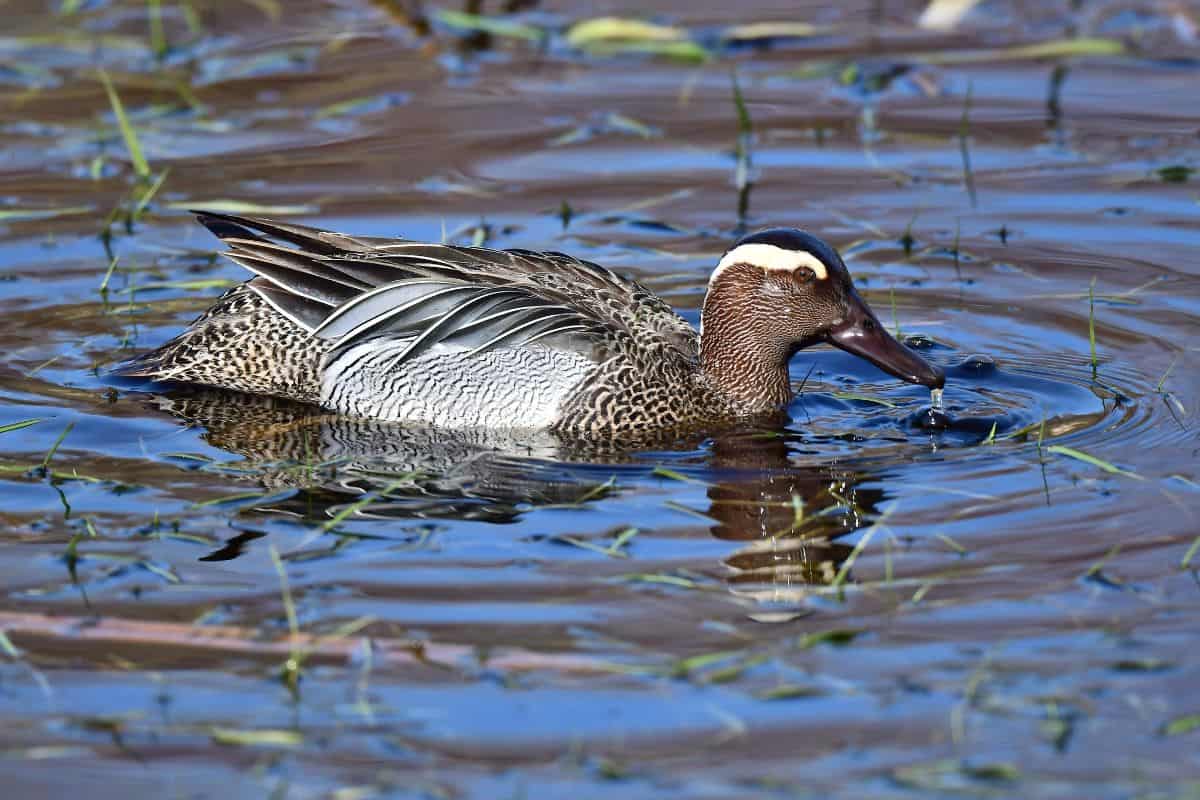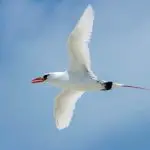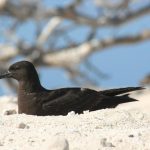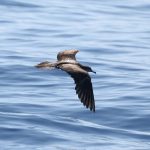Common Name: Garganey
Scientific Name: Spatula querquedula| Size | Diet | Range in Hawaii | Status in Hawaii |
|---|---|---|---|
| 14 in. -16 in. | small invertebrates, aquatic insects, and seeds | Kauai, Oahu, and Maui | Least Concern |
The Garganey is a small dabbling duck that breeds in much of Europe and across the Palearctic. It is known for its striking appearance, with a distinctive white stripe over its eye and a chestnut-colored head.
The Garganey is a migratory species, with the entire population moving to southern Africa, India, Bangladesh, and Australasia during the winter of the Northern hemisphere, where large flocks can occur. In Hawaii, the Garganey is considered a rare vagrant, with only a few sightings recorded.
Garganey
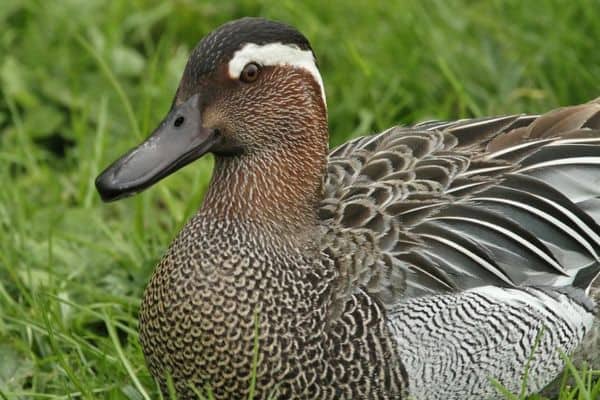
Appearance
The Garganey measures 14-16 inches (35-40 cm) in length and has a wingspan of 24-28 inches (60-70 cm). The male Garganey has a distinctive breeding plumage, with a chestnut-colored head and a white stripe over its eye. Its body is speckled brown, and its wings have a green speculum bordered by white.
The female Garganey is less striking in appearance, with a mottled brown body and a dark eye stripe. Both males and females have a blue-gray bill and legs.
Diet
The Garganey feeds primarily on small invertebrates, aquatic insects, and seeds. It forages by tipping up in shallow water and filtering small particles from the water through its bill.
During the breeding season, Garganeys may also feed on terrestrial insects and other small animals. Their diet may vary depending on the availability of food sources in their habitat.
Behavior
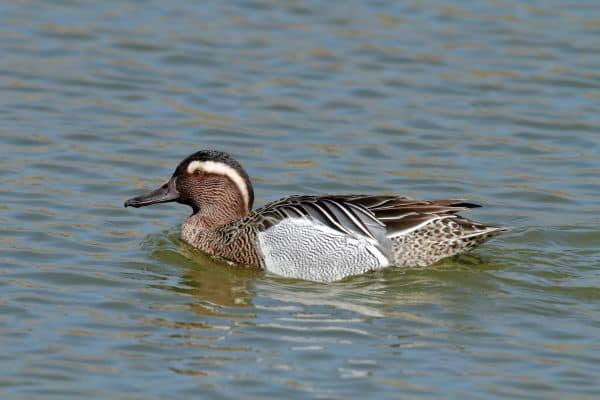
The Garganey is a social and gregarious species that forms large flocks during the non-breeding season. During the breeding season, males establish territories and perform elaborate courtship displays to attract females, including head bobbing, wing flapping, and vocalizations.
Females lay a clutch of 6-12 eggs per breeding season, which they incubate for about three weeks. The Garganey is known for its secretive behavior, preferring areas with lots of cover from aquatic plants, and can be difficult to observe in the wild.
Nesting
They typically builds their nest in thick vegetation, such as rushes or grasses, near the edge of a body of water. The female Garganey constructs the nest from a variety of materials, including grasses, leaves, and feathers, and lines it with down feathers to provide insulation for the eggs.
The female incubates the eggs for about three weeks, during which time the male may leave the breeding area to molt and regain his flight feathers. After hatching, the chicks are precocial and able to leave the nest within a few hours. The female Garganey provides care for the chicks, leading them to food sources and providing protection from predators.
Habitat
The Garganey inhabits a variety of wetland habitats, including marshes, ponds, and shallow lakes. During the breeding season, Garganeys prefer grassland areas adjacent to shallow marshes and steppe lakes, where they can find suitable nesting sites and food sources.
In the non-breeding season, Garganeys can be found in a variety of wetland habitats, including flooded fields, rice paddies, and estuaries.
Range

The Garganey has been recorded as a rare vagrant on Hawaiian islands, with sightings reported on Kauai, Oahu, and Maui.
Conservation Status
The Garganey is classified as a species of “Least Concern” by the International Union for Conservation of Nature (IUCN), due to its large and stable population and widespread distribution. However, the species is still vulnerable to habitat loss and degradation, as well as hunting and disturbance during the breeding season.
In the United Kingdom, the Garganey is classified as “Amber” under the Birds of Conservation Concern 4: the Red List for Birds, and is protected under the Wildlife and Countryside Act, 1981.
Conservation efforts for the Garganey include protecting wetland habitats, regulating hunting practices, and monitoring population trends to ensure the long-term survival of this species.
Interesting Facts
1. They are ground-nesting birds
The species is a ground-nesting bird that typically builds its nest in thick vegetation near the edge of a body of water.
2. Known for its secretive behavior
The Garganey is known for its secretive behavior, preferring areas with lots of cover from aquatic plants, and can be difficult to observe in the wild.
3. Garganeys perform elaborate courtship
During the breeding season, male Garganeys perform elaborate courtship displays to attract females, including head bobbing, wing flapping, and vocalizations.
4. Known as the “Summer Teal”
The Garganey is also known as the “Summer Teal” due to its breeding range and its resemblance to the Teal family of ducks.
5. Social and gregarious species
The Garganey is a social and gregarious species that forms large flocks during the non-breeding season.
6. Important game bird
The species is an important game bird in some parts of its range, and is hunted for sport and food.
7. They are fast and agile flier
The Garganey is a fast and agile flier, capable of reaching speeds of up to 60 miles per hour.
Frequently Asked Questions
1. Is the Garganey found in Hawaii?
Sightings of the Garganey (Spatula querquedula) have been reported on Kauai, Oahu, and Maui, but the species is considered a rare vagrant to Hawaii.
2. What is the migration pattern of the Garganey?
The Garganey is a migratory species, with its breeding range extending from Europe and western Asia to eastern Russia and China, and its wintering range extending from southern Africa to India, Bangladesh, and Australasia.
3. What is the vocalization of the Garganey?
The Garganey has a distinctive vocalization, which is a series of whistling notes that sound like “whee-whee-whee.
4. What are the threats to the Garganey?
The Garganey is vulnerable to habitat loss and degradation, as well as hunting and disturbance during the breeding season.
